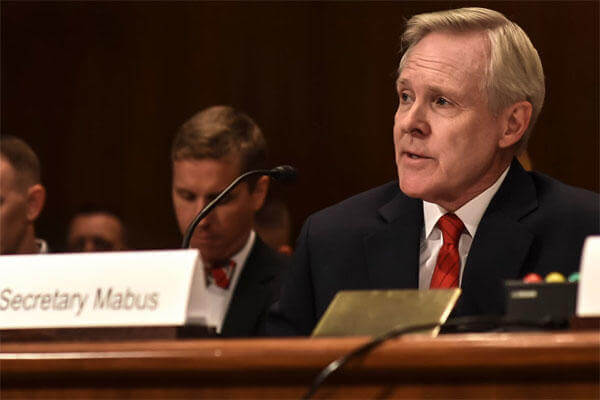WASHINGTON – National security interests face heightened threats and demands as budget woes grow more challenging and complex, but the Navy and Marines Corps remain the best value to advance global security and presence, Navy Secretary Ray Mabus told a Senate panel March 4.
The secretary testified before the Senate Appropriations Committee’s defense subcommittee to reinforce the significance of the naval forces’ rapid, self-contained response and latitude to execute missions.
Power of Presence
“Uniquely, the Navy and Marine Corps provide presence around the world, around the clock,” Mabus said. “We are the nation’s first line of defense, ready for anything that might come over the horizon.”
Mabus cited Article 1 of the Constitution, which he explained authorizes Congress to raise an Army when needed but directs them to provide and maintain a Navy.
“From the first six frigates to our growing fleet today, from Tripoli to Afghanistan, sailors and Marines have proven the founder’s wisdom,” the secretary said.
He also noted that senior U.S. leaders recognize the value of sea power.
“We are truly America’s ‘away team,’” Mabus said. “We deploy just as much in peace as we do in war, and our role in the last 70 years in securing sea lanes and freedom of commerce has boosted our own and the world’s economy.”
Nearly half the world’s population lives within 100 miles of the sea, 90 percent of global trade goes by sea and 90 percent of all voice and data go under the sea, Mabus said.
According to the secretary, some 38 million jobs in America are directly linked to seaborne international trade.
Mabus described the Navy and Marine Corps as the “primary protectors” of an international system that has created unprecedented economic growth.
“While we’ve led this effort,” he said, “we’ve worked with allies and partners, increasing interoperability, establishing relationships that also help keep the peace.”
As a result, the national defense strategy, Mabus said, is focused on the maritime domain and requires investment in maritime assets.
People, Platforms, Power, Partnership
Still, in recent years, the Navy has braced in the wake of budget turbulence marked by numerous continuing resolutions and the specter of sequestration’s return. The environment, he recounted, has spurred difficult but critical choices, which have helped mold the foundations of presence: people, platforms, power and partnership.
Mabus praised sailors and Marines, whom he described as adaptable and armed with independent judgment.
“We remain committed to providing our sailors, Marines, and our civilians with the training and support they need to maintain our naval presence -- and we include in this their dedicated families and our wounded,” he said. “We’ve launched a comprehensive approach to assure the world’s healthiest, fittest, most resilient and best-educated force, truly representing America’s diversity.”
But people, no matter how prepared, need platforms -- ships, submarines, aircraft, systems and equipment -- to perform their jobs, Mabus said.
Quantity has a quality of its own, he said, adding this philosophy calls for a properly sized and balanced fleet.
On Sept. 11, 2001, the Navy’s battle force stood at 316 ships, Mabus said, before a sharp drop in 2008 to 278 ships. He said the focus on two ground wars over the past decade only partly explains the decline.
Mabus said in the five years before hetook over as Navy secretary, the Navy contracted for only 27 ships, which he maintained was not enough to stanch the decline in the fleet size.
Mabus reported the Navy contracted for 70 ships during his first five years on the job, halting and reversing the decline. And by decade’s end, the service expects to be at 304 ships.
“We accomplished this with a direct and fundamental business approach,” he said, “increasing competition, relying more on fixed-price contracts … and multi-year block buys.”
But budget instability, Mabus said, hampers the Navy’s ability to manage and grow the fleet and maintain the industrial base.
Cutting ships, he added, is the most “damaging, dangerous and least reversible” course of action.
“Fueling those ships, aircraft and vehicles of our Navy and Marine Corps is a vital operation of concern and enables the global presence necessary to keep the nation secure,” Mabus said.
The Navy therefore has a history of innovation, particularly in energy, from sail, to steam, to oil and nuclear pioneering, the secretary said.
“Our national security interests in the Navy and Marine Corps to meet their missions,” he said, “must be enhanced by increasing our energy diversity.”
Additionally, presence and global security will be augmented through partnerships and cooperation, ensuring the Navy remains an immediate, capable and adaptable option when a crisis develops, the secretary said.
Though President Barack Obama’s proposed fiscal year 2016 budget balances current readiness while sustaining a highly capable fleet, Mabus said, the current budget climate demands a rigorous examination of every dollar spent and aggressive efforts to cut unnecessary costs from tail to tooth.



























